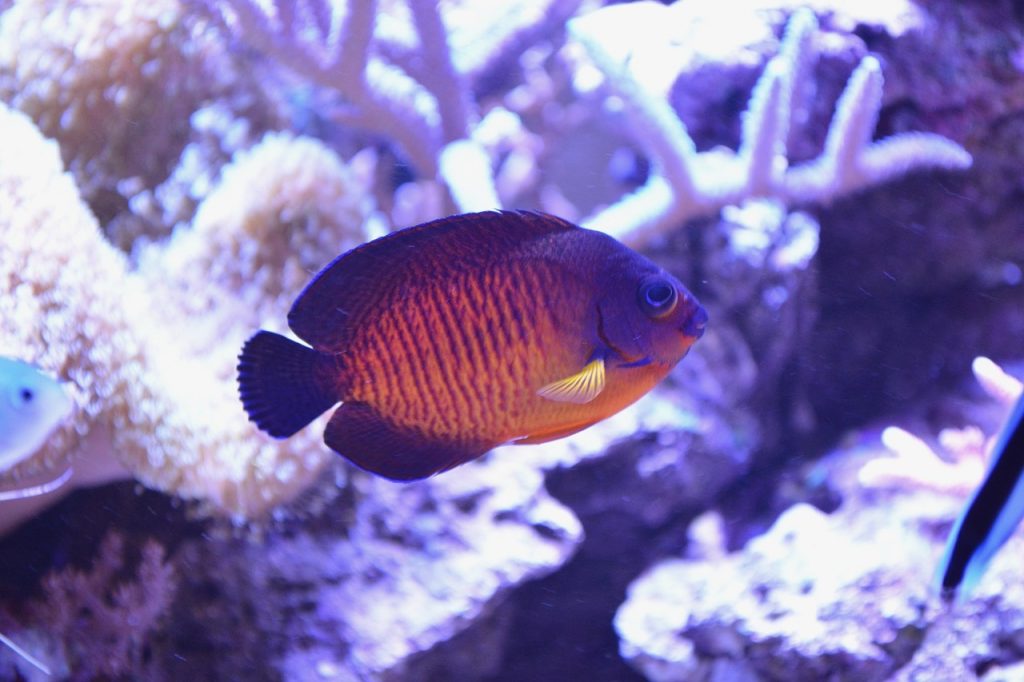
There are two main kinds of saltwater angelfish: the Large Saltwater Angelfish and the Dwarf Saltwater Angelfish.
In this article, we’re going to look at the smaller variety: the dwarf saltwater angelfish.
The dwarf saltwater angelfish contains a variety of species that are very colorful and beautiful to look at.
This fish looks quite a bit different from their freshwater counterparts. While the freshwater angelfish is flat-bodied and tall with long fins and tendrils, the dwarf angelfish is more compact vertically more resembling freshwater cichlids although some are more round-shaped and look like discus. Like many saltwater fish, these specimens are beautifully colored with bright oranges, blues, reds and yellows.
Table of Contents
Tank Considerations
In the wild these fish are quite territorial and can be aggressive if placed in small spaces, so care should be taken to give them enough room in your tank setup. Most experts recommend a minimum of 30 gallons, although some say upwards of 100 is preferable. It all depends on the variety of fish you’re interested in keeping. These fish can range from 2 1/2 inches up to six inches depending on the species, so you’ll have to take that into consideration when determining what size tank you’ll need. Smaller varieties like the Pygmy Angelfish can be placed in tanks of about 30 gallons, but for larger varieties such as the Eibli Angelfish, which can grow up to six inches, you’re going to want a tank of about 100 gallons or larger.
It’s also recommended that you introduce these fish to a biologically established tank. If you introduce these fish into a newly set up tank it’s likely they won’t survive.

Dwarf Angelfish Care and Health
To keep your saltwater angelfish happy, you’re going to want to make sure you give them plenty of rocks — live rocks preferably — and places to hide. These fish inhabit saltwater reefs in the wild, and you’re going to want to mimic that aquascape in your tank as closely as possible. In the wild, the dwarf angelfish spends a lot of time hiding from predators, and while they’re not likely to face any serious threats in your tank, they’ll feel safer if they have plenty of nooks and crannies to squeeze into. These fish like to graze on the bottom for food, and you might consider adding coral rubble, to make them feel at home.
In the wild, it’s common for these fish to group like a harem — one adult male to a number of females, and you should consider replicating that at home for optimal results.
While the dwarf saltwater angelfish is a hardy fish, they still need optimum water quality, which means bi-weekly water changes from between 10 to 15 percent with a small tank of 30 gallons or less, and monthly water changes for large tanks of 75 gallons and up.
Water quality for these fish is as follows: 72-82˚ Fahrenheit, pH of 8.1-8.4, and a specific gravity between 1.020 and 1.025. They also prefer an environment of medium water hardness.
The dwarf saltwater angelfish is an aggressive fish, and you’ll want to take that into consideration if you’re putting them into a community tank. They will go after smaller fish — even killing them — regardless of how much space they have. And like other varieties of fish, male dwarf angelfish will fight other males to the death.
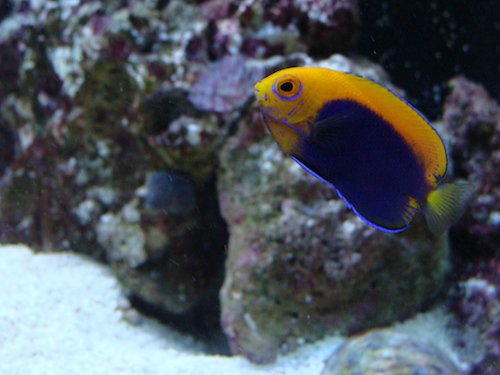
Diet
In the wild, the dwarf saltwater angelfish prefers to dine on invertebrates, and will do well if you can provide them with that in your setup. They will also gladly accept treats such as chopped meat, and you should consider giving them a vitamin supplement as well to keep them healthy and stave off any disease such as head and lateral line erosion. It’s recommended that you feed these fish three times a day.
Breeding
What’s interesting about these fish is that they’re all born females and sex isn’t sorted out until they mature. The larger fish — the ones that dominate the group — become males and the rest will stay female. Also interesting is if the dominant male in the group dies, the next dominant one will become male and so on.
Saltwater dwarf angelfish release both eggs and sperm at the same time, and is done usually at sunset in the wild. To get them to breed successfully in your tank you’re going to want to mimic dusk conditions and you can do that by turning lights off in stages. Do this consistently every day and they should be encouraged to breed.
Species
There are many different species of saltwater dwarf angelfish to choose from. As mentioned, they all exhibit stunning colors and patterns making them beautiful living decorations for your home.
Here are a few popular varieties:
Coral Beauty Angelfish

Centropyge bispinosus is a fish that exhibits the complimentary blue/orange or yellow/purple color pattern. They grow a little larger than other dwarfs — about four inches.
Bicolor Angelfish
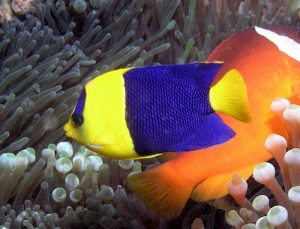
Centropuge bicolor is aptly named as this dwarf angelfish’s front half and tail are colored yellow and the mid section is a dark blue.
Lemonpeel Angelfish
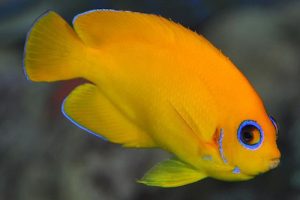
Centropyge flavissima grows to approximately five inches and like its namesake, is a lemon yellow.
Eibli Angelfish
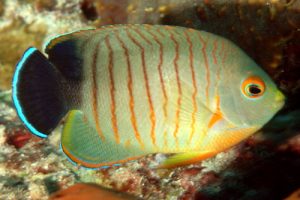
Centropyge eibli is a fish that grows to be about six inches and exhibits a stunning green, red, teal and white coloring, making it one of the most colorful variety you’ll find.
Flame Angelfish
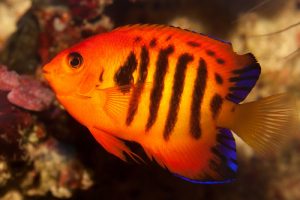
Centropyge loricula is a stunning fish with fire red over most of its body with bright blue accents. Beware of these fish because they are susceptible to ich. Be sure to pay special attention for signs of this if you buy from your local pet store.
Potters Angelfish
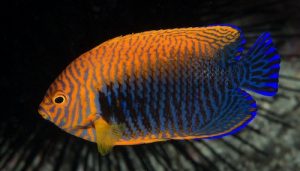
Centropyge potteri grows to about four inches. This fish is considered more difficult to keep because they need to slowly adjust to your tank conditions.
Pygmy Angelfish
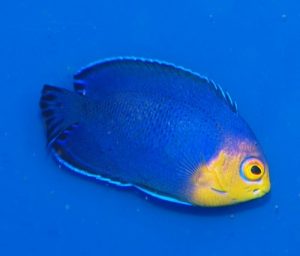
Centropyge argi is perhaps the smallest of the species and only grows to about 2 1/2 inches. They are also called the Cherub Angelfish or Cherubfish. While the rest of the species will need a fairly large tank, you can get by with placing these fish in tanks as small as 30 gallons.
Yellow Angelfish

Centropyge heraldi is bright yellow in color and grows to about four inches. They will require a larger tank size, closer to 70 gallons. They are also known as the False Lemonpeel Angelfish because they resemble the Lemonpeel variety very closely except they lack the blue around the eyes and fin edges that the Lemonpeel has.
Summary
- Fish size: Varies from 2 1/2 inches to 6 inches depending on species
- Schooling: Groups made up of one male to multiple females
- Tank size: Depends on species. Smaller varieties can do with tanks 30 gallons, while larger varieties require up to and exceeding 70 to 100 gallons
- Diet: Omnivore
- Water temperature: 72-82˚ Fahrenheit
- Water pH: 8.1-8.4
- Specific Gravity: 1.020-1.025
- Water hardness: Medium
- Breeding: Moderate
In conclusion, the dwarf saltwater angelfish can be stunning additions to your marine aquarium, but you have to know what you’re doing. These fish are on the aggressive side and do need above average care and attention, especially when breeding. Also be aware that it’s not uncommon for these fish to be riddled with parasites when they arrive in this country, so be sure to observe them at length at your pet store for any abnormalities.
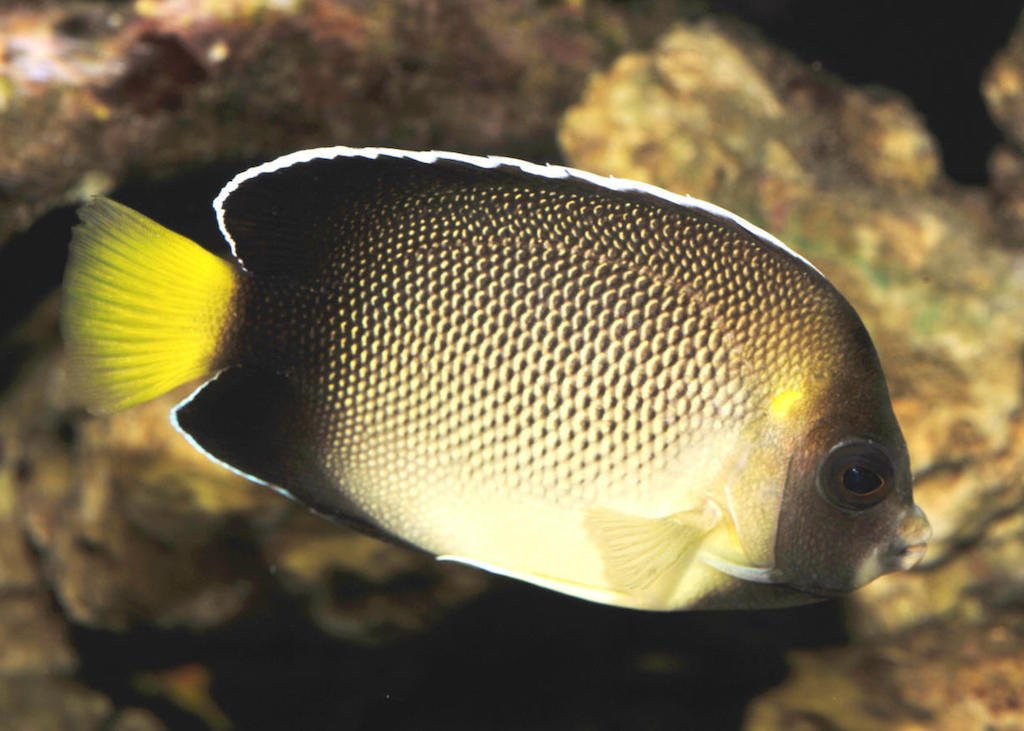

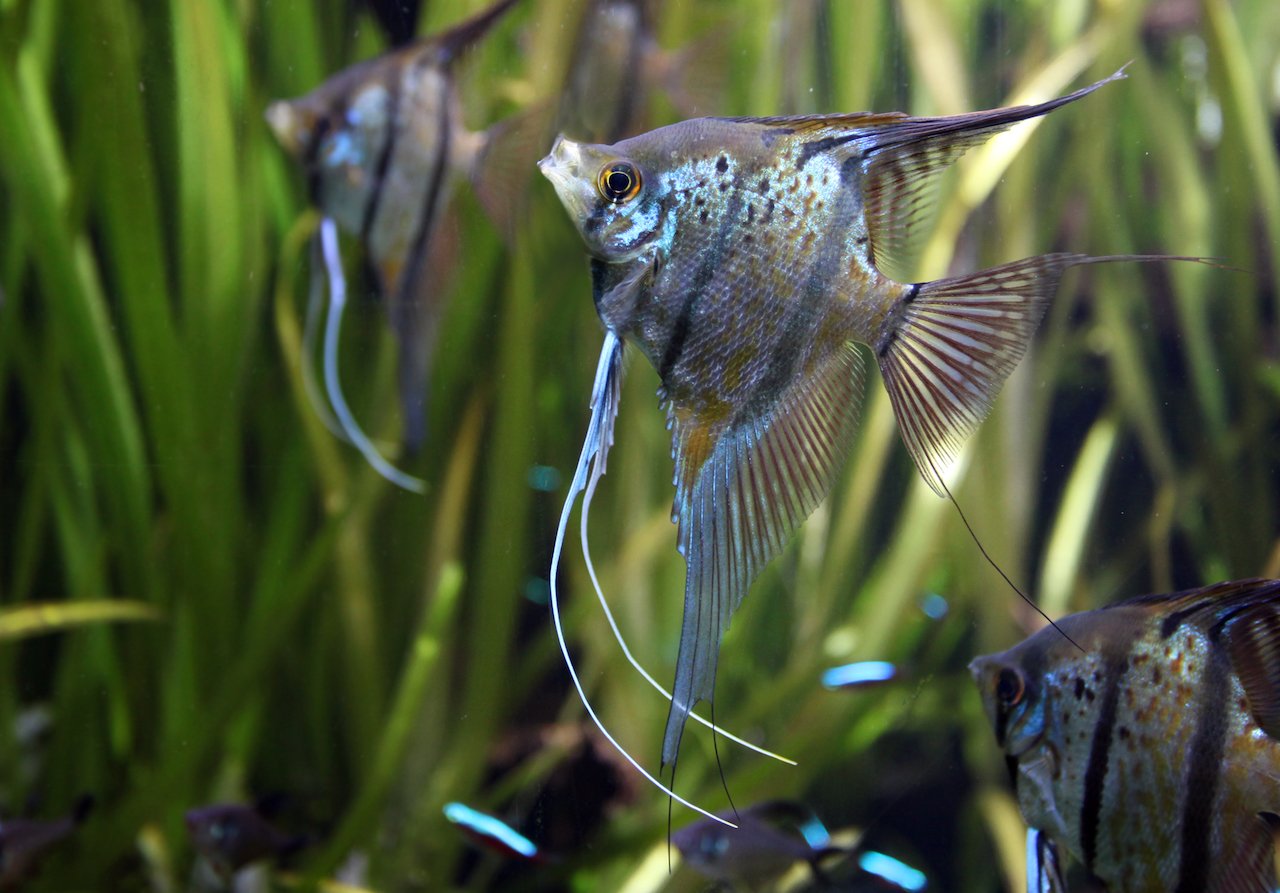
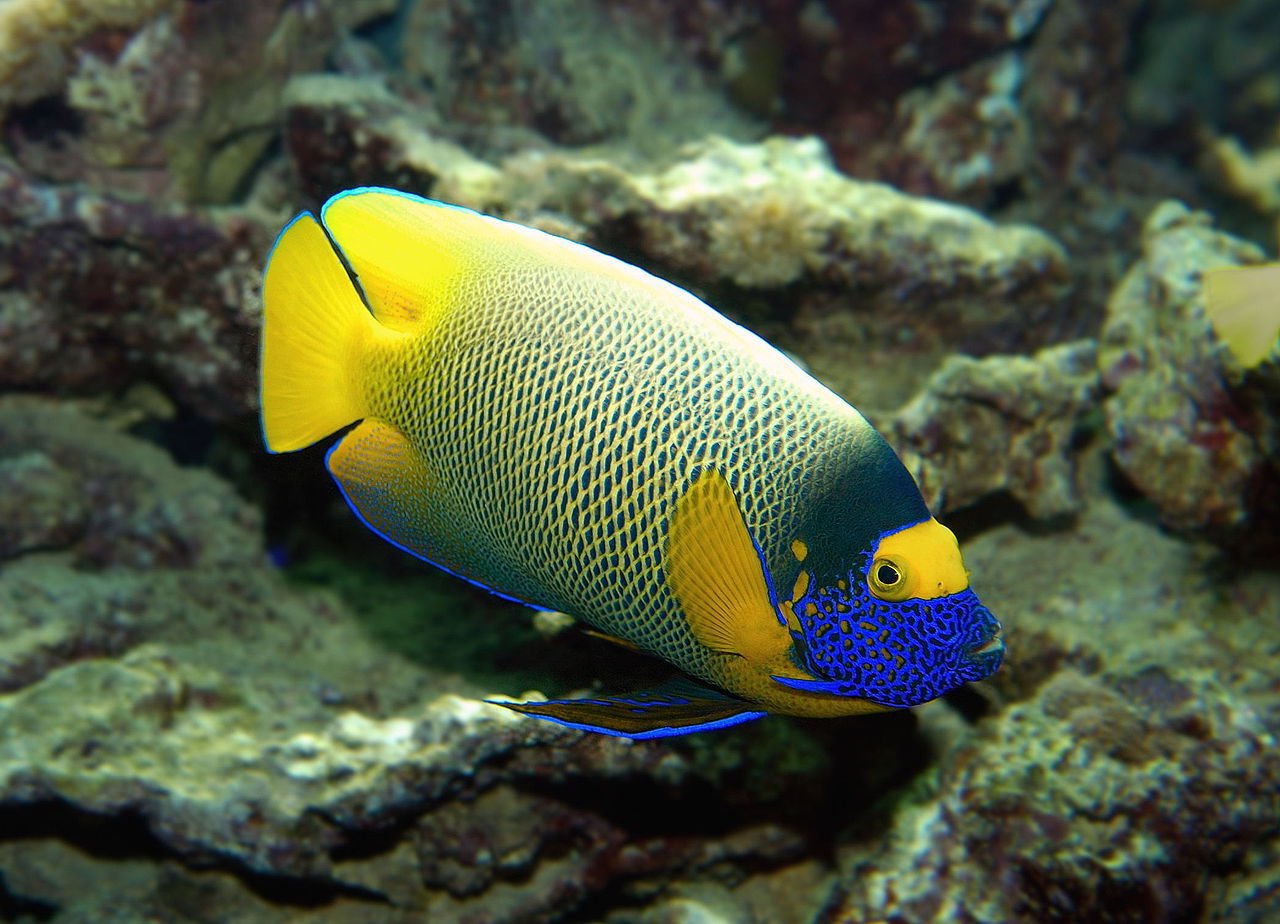
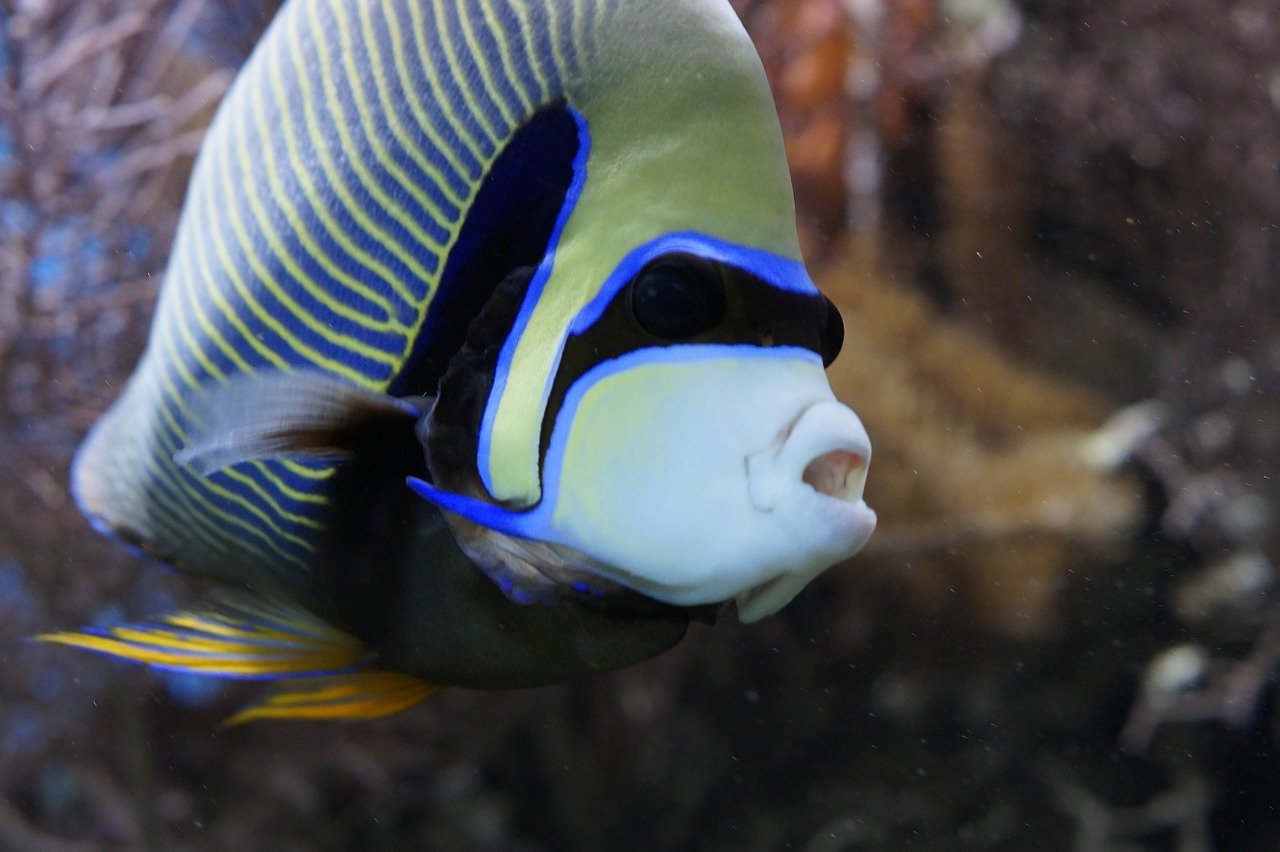
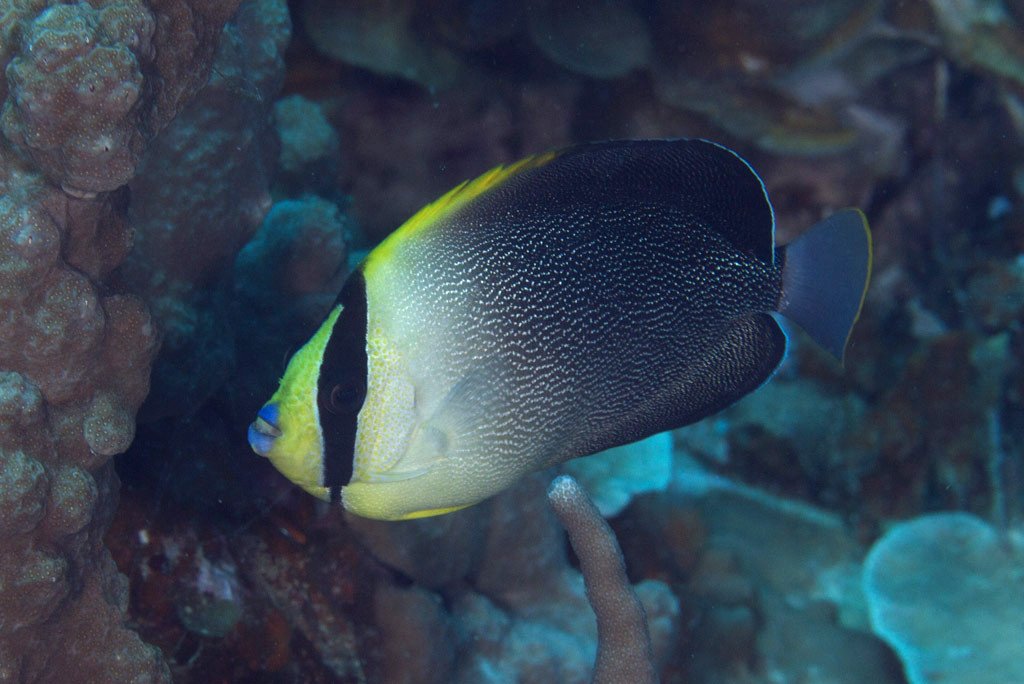
Leave a Reply